![]()
Two-hundred years ago, a young woman by the name of Mary Anning walked along this shore, using her keenly self-trained observation skills to spot fossils eroding out of these cliffs. The cliffs are the blue Lias, Jurassic mudstones filled with ammonites, belemnites, icthyosaurs, and plesiosaurs. Mary Anning found and prepared her first ichthyosaur in 1811, when she was just 12 years old. Later she found the first plesiosaur.
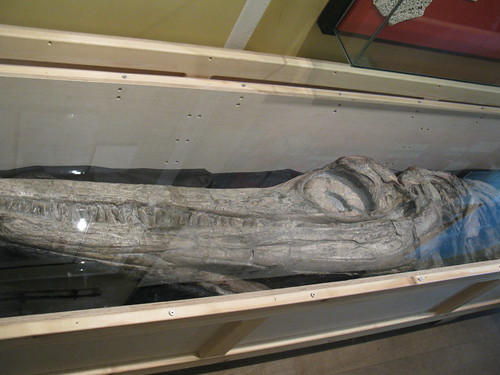
Mary Anning's first ichthyosaur, part of the collections of the Natural History Museum in London, and now on display at the Lyme Regis museum to honor the bicentennary of its discovery. August 2011.
As a woman, Mary Anning was kept out of formal scientific circles, and as a poor woman she was doubly excluded, because she couldn’t even claim to be a gentlewoman hobbyist. Instead she earned money by finding, preparing, and selling her fossils, become a valuable source for leading scientists and collectors of her day. Many of these discoveries and preparations were not properly credited to her at the time, but today she is recognized as a leading figure in paleontology for her collecting and descriptive skills.
If you go to Lyme Regis now, as I did this summer, you can explore a lovely chock-full museum on the very site where Anning’s house stood along the sea wall. Later, when the weather cooperates a bit more, you can walk along the same shoreline, and see if you have the skill or luck to make a discovery as Mary Anning did.
As the cliffs frequently have landslips and are battered by the sea, the process of erosion is continually exposing new fossils. Several ichthyosaurs have been found in the past few years, including one exposed when the town was repairing the seawall in front of the amusement arcade. I was told, however, that the best time to make a vertebrate discovery is just after a big storm when the newly eroded material is fresh and the serious collectors are out looking.
On any day whatsoever, a stroll along the cobbly beach at the base of the cliffs will reward with countless ammonites and belemnites. At first I exclaimed over the small ammonites, especially the ones with exquisitely preserved details.
Then I started to see the “ammonite pavements”…
Finally, I spotted some of the really big ammonites. The one below was my favorite. A young boy had turned over the rock and discovered the fossil, and he and his family were standing around in bewilderment. Collecting is allowed on the beach, but how in the world were they ever going to get that thing home?
- For more information on Mary Anning, start with the University of California Paleontology Museum bio
- For more information on the geology of the area, start with: West, Ian M. and Gallois, Ramues. 2011. Lyme Regis, Westward. Part of Geology of the Wessex Coast. (including part Jurassic Coast, Dorset and East Devon UNESCO World Heritage Site) Internet geological field guide. http://www.soton.ac.uk/~imw/Lyme-Regis-Westward.htm. Romsey, Hampshire and School of Ocean and Earth Science, National Oceanography Centre Southampton, Southampton University.
- and for a fun read to pique your interest in the area, the woman, and the fossils: Tracy Chevalier’s Remarkable Creatures

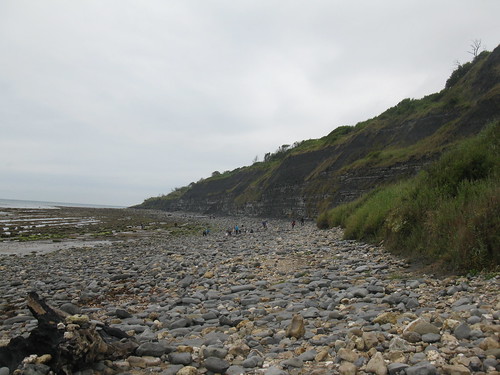
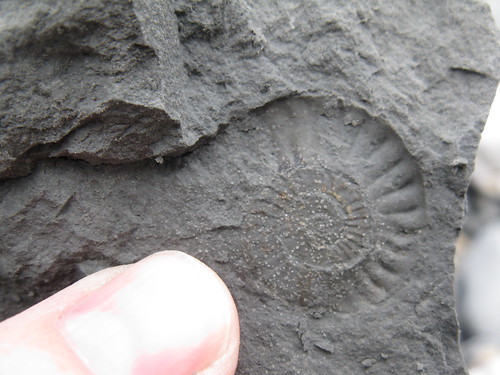
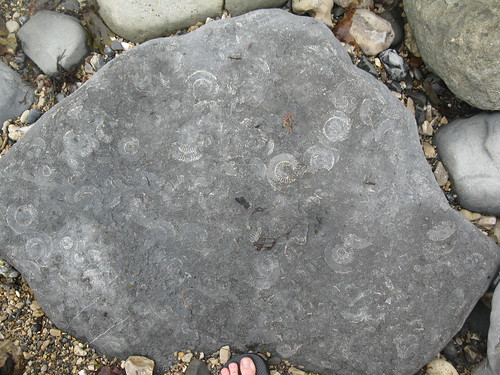
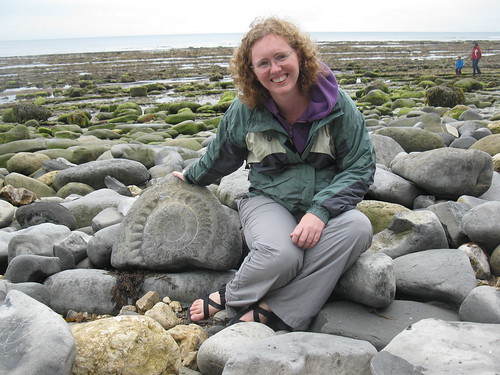


Comments (7)
Links (1)-
Pingback: Our Highly Allochthonous travels in 2011 | Highly Allochthonous